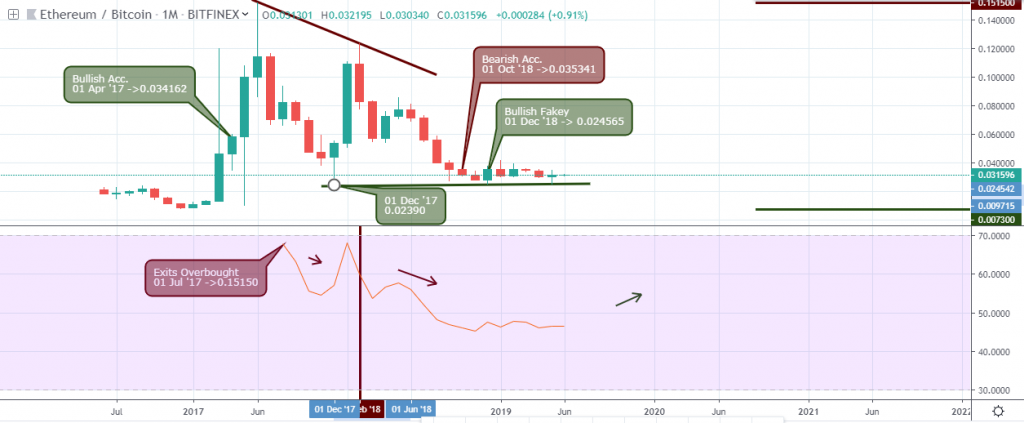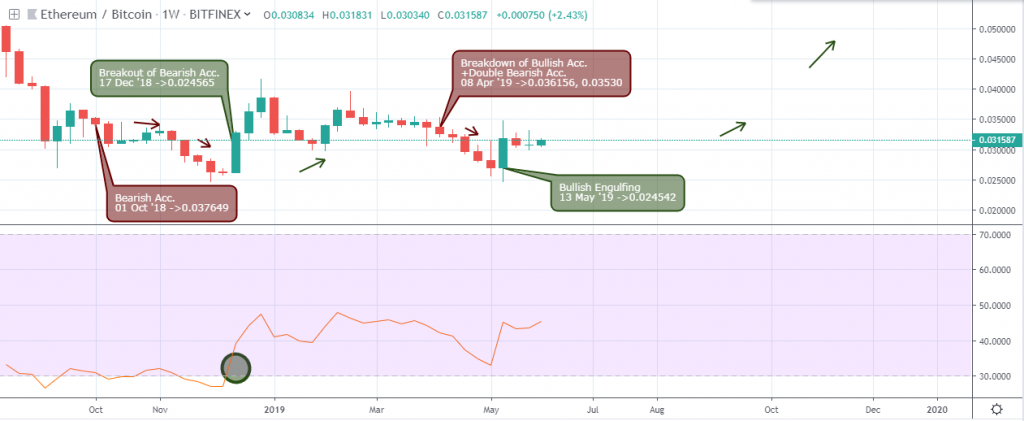Ethereum is an open-sourced, blockchain-based distributed computing platform and operating system (OS) that uses smart contracts. From this, the Ether token (ETH) is generated and uses “gas” as an internal pricing mechanism for transactions. Vitalik Buterin, programmer and co-founder of Ethereum, argued that bitcoin needed a scripting language for application development. When this failed to be recognized, he began to develop a new platform.
Without a doubt, ETH is ranked #2 by market cap, second only to BTC, so, why does Ethereum seem to have stunted growth?
Shifting Confidence
Ethereum’s platform was made to allow developers the ability to launch DApps, but it was also used to launch ICOs, allowing just about anyone to create a crowdfunding venture without actually having product. As people began to wake up and lose confidence in ICOs, we can only speculate that this prompted a slow down on the Ethereum chain.
How can ICOs affect a decentralized platform?
Let’s first talk about the ICO hype. Based on a report published on October 19 ’18 by Ernst and Young, a Big Four auditor firm, ICOs that raised capital in 2017 have not delivered or restored confidence for its investors.
[rml_read_more]
EY’s analysis further indicated that an investor with a portfolio consisting of 2017 ICO projects, as of January ’18, would have lost about 66% of their investment with 86% of the project tokens trading below their listing price, and about 30% of them losing all their value. This has shades of the bursting bubble that was seen in the dot com era.
The auditors, Ernst and Young, went further to analyze the development of working products and prototypes in this space and heir findings revealed that only 29% of the projects showed any progress, and 71% of the projects had no offering in the market at all.
Then Crypto Winter Came
The general decline in the total market capitalization of cryptocurrencies, dubbed “crypto winter,” also contributes to a slow recovery of the Ether (ETH) price, not forgetting a dominance of the Bitcoin price as shown on the ETHBTC chart below.
ETHBTC Monthly

Starting from the monthly chart of the ETHBTC pair, a bullish accumulation pattern was signaled on April ’17 during the ICO bubble and crypto rush of 2017. After exiting the RSI overbought level-70 on July ’17, the price of Ether (ETH) entered a downward spiral.
A significant bullish support level of 0.02390 was established on December 01 ’17 and served as a major pivot point for the current slowing of the bearish price descent.
Just above the critical support level of 0.02390, a bullish Fakey price pattern was signaled on December 01 ’18, a year after the crucial support level was established.
The pair is currently locked in a triangle pattern which, at the moment, has a bullish outlook and a close above the critical resistance trend line.
A price close below the support trend line may lead to further weakness of the Ether (ETH).
ETHBTC Weekly

From the weekly chart perspective, selling resistance failed to a burst of buying pressure as well as an exit of the oversold region on December 17 ’18. A double bottom chart setup was also signaled on May 13 ’19 with support at 0.024542.
Scalability and Plasma Technology
At an event organized by ConsenSys, a company focused on the development of Ethereum, co-founder Joseph Lubin spoke about the technical capacity of Ethereum and what awaits the ecosystem soon.
Lubin spoke with Coin Telegraph about the scalability state and consensus of the Ethereum network. He went on to say that Etherum has scaled quite significantly and has a base trust layer that can handle 15 to 27 transactions per second.
The Plasma technology enables less decentralized platforms sitting at layer2 of the ecosystem that benefits from full, and in some cases partial, trust. This allows the best of both worlds in terms of high transaction per second and security of the base layer.
Lubin stated that with the base trust layer currently at 15 to 27 transactions per second, in the space of 18 to 24 months, the capacity of the base trust layer will be multiplied by about a thousand times. This development is dubbed Serenity or Ethereum 2.0.
Conclusion
Suffering a loss from Bitcoin (BTC) and the USD, accompanied by bearish ICO investments and scalability issues, the growth of the Ether (ETH) has slowed significantly to reflect the crypto confidence, but currently finds itself in a range bound market. We may see a recovery in the ICO sector, and consequently, the price of ETH – if the development team of the Ethereum network can fulfill their promise to scale. This is fundamental for speculative demand.
Disclaimer
Content provided by CryptoTraderNews is for informational purposes only, and should not be construed as legal, tax, investment, financial, or other advice. All information is of a general nature. As always, there is risk with any investment. In exchange for using our products and services, you agree not to hold CryptoTraderNews Pro, its affiliates, or any third party service provider liable for any possible claim for damages arising from decisions you make based on information made available to you through our services.
